#utility patent
Text
Design Patent Drawings | The Patent Experts
At The Patent Experts, we specialize in creating precise and high-quality design patent drawings that meet the rigorous standards required for patent applications worldwide. Our team of skilled professionals is dedicated to providing detailed and accurate illustrations, ensuring your design patents are well-documented and fully compliant with international regulations. Whether you are an inventor, a small business, or a large corporation, we are here to support your intellectual property needs with unmatched expertise and attention to detail.
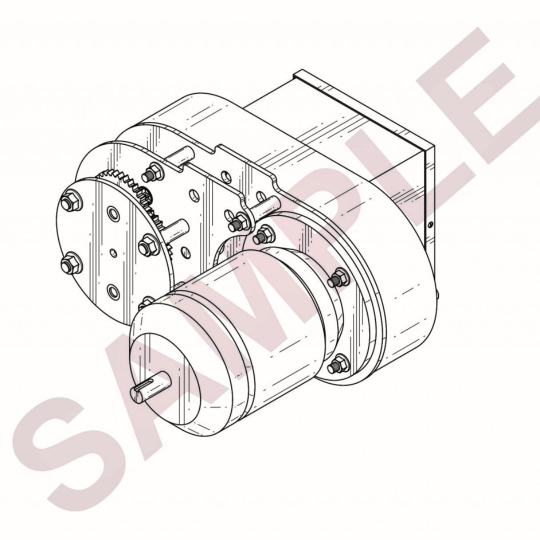
Ensure your design patents stand out and gain the protection they deserve with our top-tier drawing services.
Visit www.thepatentexperts.com today for high-quality patent and trademark drawings that make a difference.
#design#design patent#utility patent#patent#patent illustrations#patent drawings#services#patent application#intellectual property#uspto#trademark drawings#trademark#logo
0 notes
Text
Patent Illustrations Experts in Design and Utility Patents | Thepatentillustrator.com

The patent illustrator is a patent illustrations expert in design patents and utility patents. We have been preparing drawings for law firms, patent agents and attorneys. For more information visit us: https://www.thepatentillustrator.com
#patent drawings#digital art#Utility Patent#Pantent Illustrator#Design Patent#The patent illustrator#USA
0 notes
Text
youtube
Watch the 2024 American Climate Leadership Awards for High School Students now: https://youtu.be/5C-bb9PoRLc
The recording is now available on ecoAmerica's YouTube channel for viewers to be inspired by student climate leaders! Join Aishah-Nyeta Brown & Jerome Foster II and be inspired by student climate leaders as we recognize the High School Student finalists. Watch now to find out which student received the $25,000 grand prize and top recognition!
#ACLA24#ACLA24HighSchoolStudents#youtube#youtube video#climate leaders#climate solutions#climate action#climate and environment#climate#climate change#climate and health#climate blog#climate justice#climate news#weather and climate#environmental news#environment#environmental awareness#environment and health#environmental#environmental issues#environmental education#environmental justice#environmental protection#environmental health#high school students#high school#youth#youth of america#school
16K notes
·
View notes
Text
0 notes
Text
Utility Patent Owner Targets Cannabis Producer
Utility Patent Owner Targets Cannabis Producer
By Jihee Ahn, Attorney at Harris Bricken
While patent protection has been generally available for some time now, we’ve covered why patent protection has been largely limited for the cannabis industry (see this post). However, that isn’t going to stop patent infringement actions from reaching cannabis businesses, as can be seen from a recent case filed by a greenhouse builder.
The…
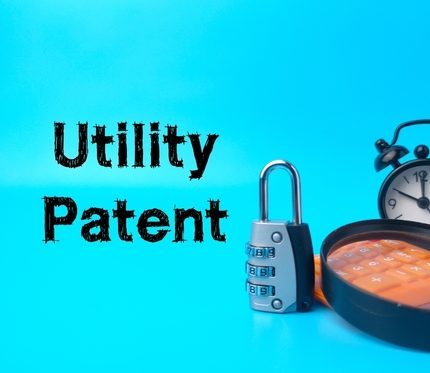
View On WordPress
0 notes
Text

In my continuing quest to wring meaning from the filler bits of Bleach anime episode #32, why are there 55 gallon oil drums in Inuzuri?
The obvious explanation is that the Seireitei ships its nuclear forbidden-kidou waste products out there, which also explains why there are so many carts.
#bleach worldbuilding#inuzuri#the 55 gallon oil drum was patented in 1905 in case you were wondering#but i don't think inuzuri has oil lamps or fish packing or the sort of industry that would utilize these??#anyway did hisana die of seireitei toxic waste product-induced cancer? SEEMS LIKELY#did i take this screenshot on a very obvious THAT'S WHAT SHE SAID joke on purpose? search your heart.#the subtitles say 'ren' but his little buddies actually call him 'ren-chan'#it is the cutest thing in the world and i will never get over it#as far as i can tell rukia never once calls him ren-chan#i suspect i would probably die if she did#and likely so would he
92 notes
·
View notes
Text
youtube
Watch the American Climate Leadership Awards 2024 now: https://youtu.be/bWiW4Rp8vF0?feature=shared
The American Climate Leadership Awards 2024 broadcast recording is now available on ecoAmerica's YouTube channel for viewers to be inspired by active climate leaders. Watch to find out which finalist received the $50,000 grand prize! Hosted by Vanessa Hauc and featuring Bill McKibben and Katharine Hayhoe!
#ACLA24#ACLA24Leaders#youtube#youtube video#climate leaders#climate solutions#climate action#climate and environment#climate#climate change#climate and health#climate blog#climate justice#climate news#weather and climate#environmental news#environment#environmental awareness#environment and health#environmental#environmental issues#environmental justice#environment protection#environmental health#Youtube
15K notes
·
View notes
Photo

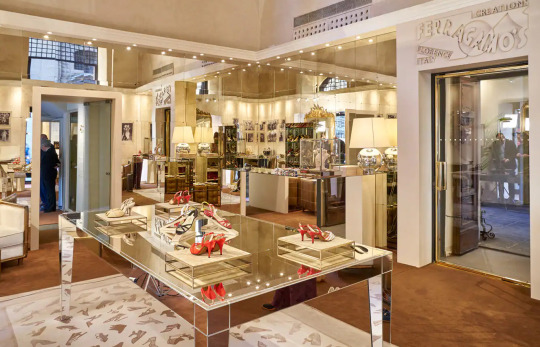
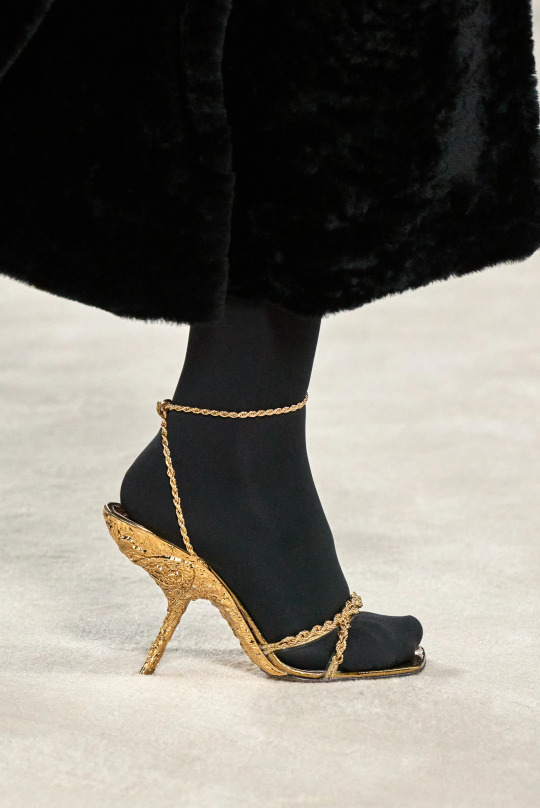

What fashion makes the heritage cut? What Shoemaker of Dreams and even the Walter Albini relaunch indicates…
The Salvatore Ferragamo documentary Shoemaker of Dreams directed by Luca Guadagnino is finally available on AppleTV and, if you missed it in theaters or at other screenings in Italy since its first premieres in 2021, this is the time to watch it. Mix yourself an Aperol Spritz, imagine you’re at Procacci or Obika on Via Tornabuoni (unfortunately the former Anglo-American haunt featured in Tea with Mussolini, Doney’s, closed years ago…) and immerse yourself in the story of this Southern Italian immigrant to the United States who revolutionized shoes and shoe-making for Florentines and the wider world. Full of personal insights, the documentary also features Salvatore Ferragamo’s own voice taken from 1955 recordings of his Memoirs and interviews with Australian TV outlets in 1958. This is an especially moving part of the documentary because Salvatore Ferragamo’s voice, in some ways, perfectly encapsulates the context of the cultural moments in which he participated beyond fashion. Heritage, we might say, before heritage. These moments include Italians coming to the United States in the early 20th century with the requisite $20 entrance fee to create new lives and new identities for themselves, the beginnings of the movie industry in Santa Barbara in all its creativity and its decampment to Hollywood, and the determination of entrepreneurs to succeed against all odds and Florentine expectations, even in a complex early 20th century Italy facing economic sanctions.
But, even more than that, the documentary is a testament to one man’s vision of shoes, from how they should be made, to the creativity they can embody and the messages they can impart. And this vision, on display more than 100 years later, is perhaps the most striking thing about the documentary because the vision highlights how we can project the present into the future and extend a role to the past in our visions of the present. Speaking after the bankruptcy of his business in 1933, Ferragamo is quoted in the documentary
For the first time in my life, I started to look back over the shoulder of my past. As a flash, it all seemed to see many things which I had, until then, never seen before. I looked forward to my future.
Looking to our past, even as we craft our personal narratives, and spotting what matters and what doesn’t, and how to use that for the benefit of our present and our future, is a central question at the heart of heritage.
In fashion, a field defined by its timeliness (as Saviolo and Corbellini in particular describe it), spotting what will matter over time is an endeavor. But, as time passes, time acts almost as a sieve, filtering out what matters and what doesn’t, what is timeless and what is timely for present generations. The results of the application of time can be unexpected (would you have thought that thinly rectangular sunglasses, low rise pants and other silhouettes from the late nineties and early noughties would be back in fashion?). The results can also be unexpected but somewhat pre-identifiable, driven by marketing, important brand anniversaries, and brand mythmaking as much as by nostalgia and/or individual and collective tastes (Exhibit A: the resurgence of the Fendi Baguette bag). Designers often play an important role in the curation of the past, as Maximilian Davis is doing at Ferragamo now- citing to Ferragamo’s gold sandal and building on the F heel, among other design details.
The pull between the past and the present, what we might term a battle for the future of fashion- heritage- also depends on the law. And this is also on display in Shoemaker of Dreams. One of the primary pieces of evidence shown during the documentary as a testament to Ferragamo’s vision are the multitude of patents he had on the procedures for his shoe designs, the processes to make them, and their look (the Ferragamo Museum also staged an insightful exhibit on these patents in 2004). What we can take from the past and what we can re-use often depends on whether someone has a right to control a production, the use of a design, its reproduction and even the associations we make and have with that design. Some of the most insightful of Ferragamo’s creations (many reproduced ingeniously as part of the Ferragamo’s Creations line) are the fruit of others’ control of raw materials (or lack thereof), his own patents which reserved control over specific parts to Ferragamo himself for a time, the matching of tradition and innovation, and the inspiration that came from themes, recalling, and remembering. While the documentary uses the Invisible Sandal (one of the most evocative examples I’ve explored extensively in other work) and the caged heel, the facts surrounding Ferragamo’s wedge made with cork are particularly evocative of the numerous threads that make up the design of one of his shoes. In his Memoirs, Ferragamo details how, after designing them years before, he discovered that a version of wedge soles had been worn centuries before thanks to an archeological excavation at Villa di Boccaccio outside Florence in 1950. As Ferragamo shares in another part of the documentary
I have not followed any master. I have not followed any school. Where have I learned all that I know? I had a clear vision that my work had never been done before. I have done it. Where? I do not know. But everything that I have done since my boyhood time, it has been work which came back to me. All I have to do while I work is to sit down and recall what I know about this work and do it again.
Knowing what fashion heritage is years later, what heritage makes the cut, is often a product of vision and, as Ferragamo’s work shows, of the tools and instruments that support that vision, from patents to trademarks, and even a robust public domain and other doctrines that allow for re-mixing, re-use, and commentary. As time goes on, curation and preservation, saving the vision and the tools and instruments that support that vision, are also central to identifying what is fashion heritage and how it can impact our fashion today. This is why archives themselves are also important for making the heritage cut.
And the acquiring of rights and archives to support a contemporary vision is what we see happening today with the revival of heritage brands, like that of the incredibly prescient Walter Albini, who, as a designer, preceded Giorgio Armani in his impact on Italian ready-to-wear and the concept of Milanese fashion. The announcement of the revival of the Walter Albini brand noted that the investment company that is relaunching it acquired the designer’s “intellectual property and archives”, including the acquisition of a large tangible archive of “garments, costume jewellery, drawings, photographs, and other memorabilia” from Dr. Barbara Curti, who is listed as Chief Memory Officer of the Walter Albini Archive. While we will have to see what the vision for a 21st century Walter Albini line is, the acquisition of the previous brand’s intellectual property and archives are fundamental first steps to identifying what fashion heritage has made the cut for our present times.
References and Further Readings
https://www.lofficielusa.com/fashion/gen-z-y2k-millennial-90s-fashion-nostalgia
https://tv.apple.com/ca/movie/salvatore-ferragamo-the-shoemaker-of-dreams/umc.cmc.13bohnm0ogsk0g6wdwlftjqud
https://www.wsj.com/articles/its-happening-again-the-return-of-low-rise-jeans-d8efc3f0
The Shoemaker of Dreams by Salvatore Ferragamo (in the Italian version, pages 131-35 for the story of the cork wedge)
https://academic.oup.com/jiplp/article/17/11/891/6852707
https://www.vogue.com/fashion-shows/spring-2023-ready-to-wear/salvatore-ferragamo
https://www.vogue.com/fashion-shows/fall-2023-ready-to-wear/salvatore-ferragamo
https://artsandculture.google.com/story/UQWRSqxpWZsfIg?hl=it
https://cardozoaelj.com/fashions-brand-heritage-cultural-heritage-and-the-piracy-paradox/
https://repository.law.umich.edu/articles/222/
https://www.businessoffashion.com/articles/luxury/walter-albini-relaunch-confirmed/
https://www.newyorker.com/magazine/2007/09/24/the-piracy-paradox
https://www.nyulawreview.org/issues/volume-97-number-2/memes-on-memes-and-the-new-creativity/
https://www.cambridge.org/core/books/history-of-intellectual-property-in-50-objects/0737F2B342A61E0E90B0A98288E412C3
https://www.skira.net/books/le-leggi-della-moda/
https://www.bloomsbury.com/us/paris-capital-of-fashion-9781350102965/
https://www.unesco.org/en/legal-affairs/convention-safeguarding-intangible-cultural-heritage
https://www.instagram.com/walteralbini_officialarchive/
https://scholarworks.uark.edu/cgi/viewcontent.cgi?article=1027&context=alr
https://scholarship.law.tamu.edu/facscholar/480/
Images from
https://www.vogue.com/fashion-shows/fall-2023-ready-to-wear/salvatore-ferragamo/slideshow/details#77
https://www.vogue.com/fashion-shows/spring-2023-ready-to-wear/salvatore-ferragamo/slideshow/details#57
https://mostra1972.unipr.it/s/1972_mostra_en/page/designer_albini
https://www.ferragamo.com/creations/en/eur
#walter albini#fashion heritage#brand archives#fashion law#cultural heritage law#shoemaker of dreams#salvatore ferragamo#wedge heels#maximilian davis#ferragamo museum#ferragamo archive#albini archive#design patents#utility patents#patents#trademarks#fashion design#luca guadagnino
6 notes
·
View notes
Text
Illustrating Innovation: Utility Drawings in Patent Applications - Digital Suntech
Digital Suntech is at the forefront of innovation, specializing in cutting-edge digital solutions for patent applications. Our team of experts understands the critical role utility drawings play in securing intellectual property rights and offers comprehensive services to ensure your inventions are accurately and effectively represented. Whether you need assistance with drafting utility drawings, navigating the patent application process, or maximizing the impact of your innovations, Digital Suntech is here to help. Contact us today to learn more about how we can support your intellectual property needs.

#utility drawings#patent drawing services#patent application#innovation#patent drawing#patent illustration#intellectual property#patent protection
0 notes
Text
Utility Drawing | Patent Drawing services | Digital Suntech

Introducing Digital Suntech's utility drawings—a game-changer in precision and efficiency. With our cutting-edge technology, we revolutionize the way utility drawings are created and utilized. Say goodbye to tedious manual processes and hello to streamlined accuracy. Our software ensures seamless integration, empowering engineers and designers to produce intricate drawings with ease. From electrical layouts to pipeline schematics, Digital Suntech delivers unparalleled detail and clarity. Moreover, our platform facilitates collaboration, allowing teams to work seamlessly across projects and locations. Experience the future of utility drawings with Digital Suntech—where innovation meets practicality.
#utility drawing#patent drawing services#digital suntech#utility drawings#intellectual property#patent drawings#patent illustrations
0 notes
Text
In today's fast-paced world, utility drawing is the linchpin of efficient infrastructure development. At Digital Suntech, we understand that precision and accuracy are the cornerstones of any successful project. Our utility drawing services not only provide a clear visual representation of underground assets, but also serve as the roadmap to seamless construction, maintenance, and future expansion. With our cutting-edge technology and experienced team, we ensure that every detail is captured with utmost precision. By choosing Digital Suntech, you're not just investing in a drawing, but in a future where safety, efficiency, and sustainability are paramount. Let's build a better tomorrow, one precise line at a time.

0 notes
Text
Patent drawingS
Now, let’s delve into the importance of accurate patent drawings. Patent drawings are an integral part of any patent application, as they help to illustrate the invention and provide a visual representation of the claims made in the application. Accurate patent drawings are essential to the success of a patent application, as they can help to clarify any ambiguities or complexities in the written description and strengthen the claims made in the application.
One reason why accurate patent drawings are so important is that they can help to ensure that the patent is granted for the correct invention. If the drawings are inaccurate or unclear, it may be difficult for an examiner to understand the invention and determine whether it is novel and non-obvious. This can lead to delays or even rejection of the patent application.
Another reason why accurate patent drawings are important is that they can help to prevent patent infringement. Patent drawings can be used to compare the claims made in a patent application with existing products or processes. If the drawings are inaccurate or incomplete, it may be difficult to determine whether a product or process infringes on the patent. This can lead to costly litigation and loss of revenue for the patent holder.
How to Create Patent Drawings
Creating patent drawings can be a complex process, and it is essential to understand the guidelines and requirements set forth by the US Patent and Trademark Office (USPTO). In this blog post, we will provide some tips and guidance on how to create patent drawings that meet these requirements and accurately represent your invention.
The first step in creating patent drawings is to understand the USPTO’s requirements for drawings. The drawings must be clear, legible, and sufficiently detailed to enable a person skilled in the relevant field to understand the invention. The drawings must also conform to certain size and formatting requirements, such as a standard 8.5 x 11 inch sheet of paper with a minimum 2.5 cm margin.
Once you have a clear understanding of the requirements, the next step is to create the drawings themselves. There are various software programs and tools that can be used to create patent drawings, including both free and paid options.
One of the most popular tools for creating patent drawings is Adobe Illustrator. This program allows you to create precise and detailed drawings that can be easily edited and resized as needed. Other options include AutoCAD, SketchUp, and CorelDRAW.
When creating patent drawings, it is essential to pay attention to detail and accuracy. The drawings should clearly and accurately depict the invention and all of its components, as well as any relevant dimensions or proportions. You should also ensure that the drawings are consistent with the written description of the invention provided in the patent application.
Finally, it is important to review and proofread your patent drawings carefully before submitting them to the USPTO. Any errors or inconsistencies in the drawings can lead to delays or even rejection of the patent application.
Common Mistakes to Avoid in Patent Drawings
we will discuss some of the most common mistakes to avoid when creating patent drawings, and provide tips and guidance on how to create accurate and high-quality drawings that meet the requirements set forth by the US Patent and Trademark Office (USPTO).
One common mistake is failing to provide sufficient detail in the drawings. The drawings must be clear, legible, and sufficiently detailed to enable a person skilled in the relevant field to understand the invention. This means that all components of the invention must be clearly depicted, with all relevant dimensions and proportions provided.
Another common mistake is including non-essential features or elements in the drawings. The drawings should only depict the essential elements of the invention, and should not include any unnecessary or irrelevant features or elements.
A third common mistake is failing to adhere to the formatting and size requirements set forth by the USPTO. The drawings must be on a standard 8.5 x 11 inch sheet of paper with a minimum 2.5 cm margin, and must be formatted in a specific way to ensure clarity and consistency.
Other mistakes to avoid include using shading or coloring that obscures the details of the invention, failing to provide reference numerals or labels for all components of the invention, and including text or labels that are too small or difficult to read.
To avoid these common mistakes, it is essential to carefully review the USPTO’s guidelines and requirements for patent drawings, and to use the right tools and software to create accurate and high-quality drawings. It is also important to seek the advice of a patent attorney or agent, who can provide guidance and feedback on the drawings and ensure that they meet all of the requirements set forth by the USPTO.
Understanding Patent Drawing Requirements
it is important to understand the requirements set forth by the US Patent and Trademark Office (USPTO) to create accurate and high-quality drawings that meet these requirements.
we will discuss the key requirements for patent drawings, including their purpose, format, size, and content, and provide guidance on how to create drawings that meet these requirements and accurately represent your invention.
The purpose of patent drawings is to provide a clear and detailed visual representation of the invention. The drawings must be clear, legible, and sufficiently detailed to enable a person skilled in the relevant field to understand the invention. They must also conform to certain size and formatting requirements, such as a standard 8.5 x 11 inch sheet of paper with a minimum 2.5 cm margin.
In terms of content, the drawings must depict all the essential elements of the invention, and must include reference numerals or labels for each element. The drawings must also be consistent with the written description of the invention provided in the patent application, and must not include any non-essential features or elements.
When creating patent drawings, it is important to use the right tools and software to ensure accuracy and consistency. There are various software programs and tools that can be used to create patent drawings, including both free and paid options. Adobe Illustrator, AutoCAD, SketchUp, and CorelDRAW are popular options for creating accurate and precise patent drawings.
Another important aspect of patent drawings is ensuring that they meet the specific requirements of the USPTO. These requirements may vary depending on the type of patent application being filed, such as a utility patent, design patent, or plant patent. It is essential to carefully review the USPTO’s guidelines and requirements for patent drawings before creating them.
Patent Drawings and Patent Infringement
we will discuss the relationship between patent drawings and patent infringement, and provide guidance on how to create drawings that accurately represent the invention and protect a patent holder’s rights.
Patent drawings are an important aspect of a patent application, as they provide a clear and detailed visual representation of the invention. They are used by the US Patent and Trademark Office (USPTO) to determine the scope of the invention and ensure that it is novel, non-obvious, and meets the requirements for patentability.
In terms of patent infringement, accurate and high-quality patent drawings can help a patent holder establish the scope of their patent and identify any potential infringement by others. If a product or process is found to be similar to the invention depicted in the patent drawings, it may be considered infringing and the patent holder may have legal grounds to pursue a lawsuit.
On the other hand, inaccurate or incomplete patent drawings can weaken a patent holder’s case for infringement and even result in the invalidation of their patent. For example, if the drawings fail to depict all the essential elements of the invention or contain non-essential features or elements, it may be more difficult to establish the scope of the patent and prove infringement.
To ensure that patent drawings accurately represent the invention and protect a patent holder’s rights, it is essential to adhere to the USPTO’s guidelines and requirements for patent drawings. This includes providing sufficient detail, using the correct format and size, and ensuring that all essential elements of the invention are depicted and labeled.
The Future of Patent Drawings
we will discuss the future of patent drawings and how emerging technologies and trends may impact the creation and use of patent drawings in the years to come.
One major trend that is expected to shape the future of patent drawings is the increasing use of digital technologies. With advances in computer graphics, 3D modeling, and other digital tools, it is now possible to create more detailed and accurate patent drawings than ever before. This trend is likely to continue as more companies and individuals invest in digital tools and software to create high-quality patent drawings that meet the US Patent and Trademark Office’s requirements.
Another trend that is likely to shape the future of patent drawings is the increasing use of artificial intelligence (AI) and machine learning. These technologies have the potential to revolutionize the way that patent drawings are reviewed and evaluated, allowing for faster and more accurate analysis of complex drawings and identifying potential errors or issues that may need to be addressed.
Furthermore, the rise of virtual and augmented reality (VR/AR) technologies is also expected to impact the future of patent drawings. These technologies allow inventors and patent examiners to visualize and interact with patent drawings in new and exciting ways, providing more immersive and interactive experiences that can help to better convey the invention and its features.
Finally, the future of patent drawings is also likely to be shaped by changes in patent law and regulations. As the global economy becomes increasingly interconnected, the need for standardization and harmonization of patent laws and regulations is becoming more urgent. This trend is likely to impact the requirements for patent drawings, and may even lead to the development of new international standards for patent drawings that are recognized and enforced across multiple jurisdictions.
In conclusion
patent drawings are a crucial component of the patent application process, and the quality and accuracy of these drawings can have a significant impact on the success of a patent application. To create effective patent drawings, it is important to work with experienced patent professionals who have a deep understanding of the requirements and guidelines set forth by the USPTO and other relevant authorities.
In addition, staying up-to-date with the latest trends and technologies in the field can help inventors and patent holders create patent drawings that are of the highest quality and in compliance with all applicable regulations. Digital tools and software, such as computer graphics, 3D modeling, AI, and machine learning, can all be used to create more detailed and accurate patent drawings than ever before.
As we look to the future of patent drawings, it is clear that emerging technologies and trends will continue to shape the field. Virtual and augmented reality technologies, for example, have the potential to revolutionize the way that patent drawings are reviewed and evaluated, while changes in patent law and regulations may impact the requirements for patent drawings in the future.
By working with experienced patent professionals, utilizing digital tools and software, and staying up-to-date with the latest trends and technologies, inventors and patent holders can ensure that their patent drawings are accurate, effective, and in compliance with all relevant regulations. A well-optimized blog post can help to share this information and provide valuable insights into the world of patent drawings and patent law, helping inventors and patent holders protect their intellectual property and bring their ideas to life.
design patent, patent drawings, patent drawings services, utility patent vs design patent, utilitypatent
#design patent#patent drawings#patent drawings services#utility patent vs design patent#utilitypatent#patentdrawingsservices#patentdesign#patentdrawings
0 notes
Text
#design#design patent#utility patent#patent#patent illustrations#patent drawings#services#patent application#intellectual property#uspto#trademark drawings#trademark#logo
0 notes
Text
youtube
Utility Patent Illustrator and Design Patent Drawings Company
Together, these patent drawings ensure clear communication with patent offices, paving the way for this innovation to become a reality.
Read more by clicking on https://www.thepatentillustrator.com/
0 notes
Text
Utility drawing services are important because these drawings are the complex form of design and it secures the functional value of the patent. It is the most important type of patent drawing as it defines the structural and functional aspect of the new invention or some new addition to the existing invention.
0 notes
Text
How much does it cost to file a utility model patent in China?

Compared with invention patents, it is much cheaper to file a utility model in China.
Filing Fees for Utility Model Patents
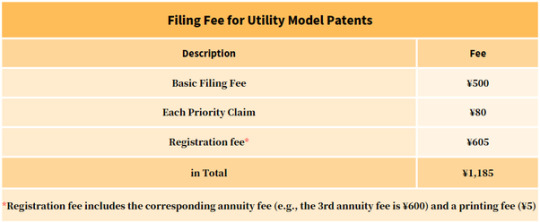
Miscellaneous Fees for Utility Model Patents
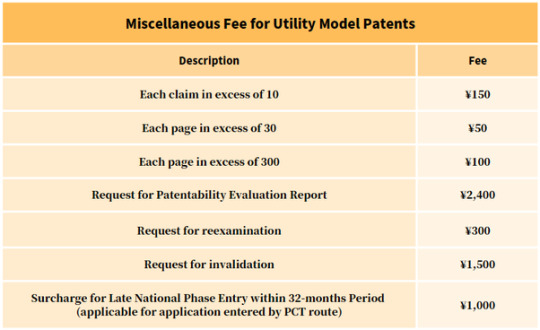
Annuities for Utility Model Patents
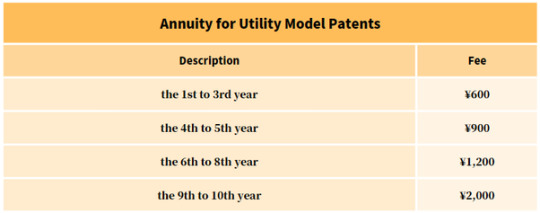
0 notes

